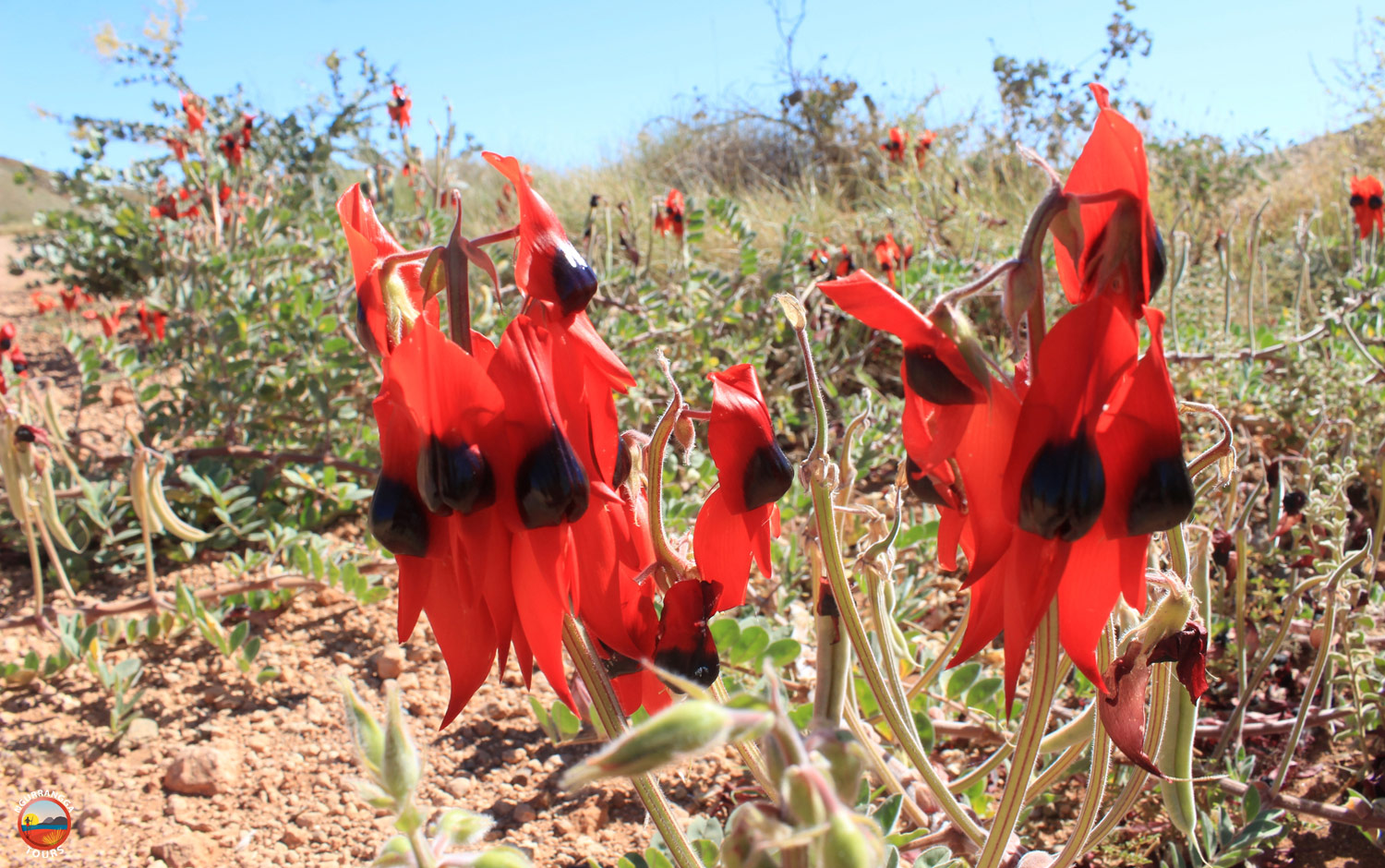From July to September, wildflowers of all colours, sizes and shapes can be seen throughout the Pilbara region. Visit the Pilbara during wildflower season and you may come across the unmistakable Sturt’s Desert Pea, fluffy mulla mulla, the tall, majestic Ashburton pea or any number of the 65 species of Acacia (wattle) found in the region.
Plants and flowers in the Pilbara have evolved unique adaptations to survive in an arid climate that receives most of its rainfall during summer by way of tropical cyclones. As you travel from the rugged ranges to the coastal reefs, the flora on display is as diverse as the landscape.
For the local Indigenous people, the plants and flowers of the Pilbara are still used today for food, medicine and ceremonial use.
Tom Price
The ancient Hamersley Ranges are covered in Spinifex Grass, Desert Bloodwood and Snappy Gum. Closer inspection reveals Northern Bluebell, Mulla Mulla, native Tomato and Limestone Cassia.
Karijini National Park
Permanent water from the gorges nourishes the Common Rock Fig, Lemongrass and Silver Cadjeput. Acacia, including the prolific Mulga and Desert Poplar, Robinson’s Desert Rose, slender Petalostylis and Ashburton Pea can be seen as the kilometres melt past. Keep an eye out for the fluffy yellow flowers of the Acacia. Also see the Spotted Emu Bush, Yellow Flame Grevillea, Twinleaf Mallee and Coolibah along the trail.
Paraburdoo
Rainfall often causes the Sturt’s Desert Pea and Bush Tomato to flower near the roadside. Also poison Morning Glory, Burra (eremophila frazeri) and Northern Bluebell are common here. The cockroach bush can also be found between Paraburdoo and Tom Price.
The seed pods resemble the American Cockroach.
Onslow
Look out for the bushes home to the adorable Green Birdflower resembling a bunch of humming birds. Onslow is also home to an abundance of Mulla Mulla, Yellow Flame Grevillea and Robinson’s Desert Rose. The fragrant Apple Bush and the unique Green Birdflower also adorn country closer to the coast.
Millstream Chichester National Park
At river crossings keep an eye out for River Red Gums, Coolibahs and the yellow flowers of the Candlestick Cassia. The rocky peaks of Chichester Range rise sharply from the coastal plain creating tranquil gorges and hidden rock pools.
The rare Millstream Fan Palm (livistona alfredii) is found on the walking trail to Chinderwarriner Pool. Bright golden sticky Cassia, Rock Kurrajong, Lace Flower, Sturt’s Desert Pea, Robinson’s Desert Rose, Morning Glory, tall Mulla Mulla, Spinifex, Snappy Gum and the Common Rock Fig also feature in the landscape.

Photo Credit: Ngurrangga Tours